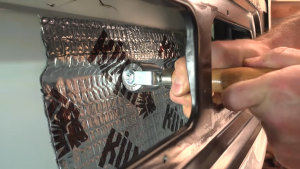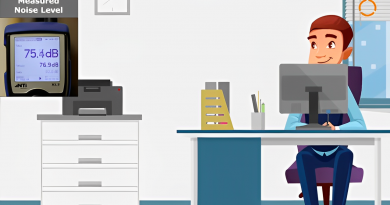Kilmat VS Dynamat
When it comes to soundproofing projects, Kilmat and Dynamat have gained widespread popularity, and for good reason. Each of these products offers distinct advantages in reducing noise and creating a more tranquil environment. If you’re considering either Kilmat or Dynamat for room soundproofing, it is essential to carefully evaluate your space’s specific needs. Comparing their features, ease of installation, and overall performance will help you make an informed decision on which product is the perfect fit for achieving your desired soundproofing goals.

Unveiling Kilmat and Dynamat
As sound deadening materials, Kilmat and Dynamat have become go-to choices for individuals seeking to improve their acoustic experiences and mitigate unwanted noise disturbances. Let’s explain what Kilmat and Dynamat are.
Kilmat
Kilmat is a brand of sound deadening material primarily used for automotive soundproofing, but it can also be applied in other settings, including room soundproofing. It is designed to reduce noise, vibrations, and resonance, making it an effective solution for creating a quieter and more comfortable space. Kilmat typically comes in the form of sheets or rolls with a self-adhesive backing, making it easy to install on various surfaces.
The material composition of Kilmat typically consists of several layers, including a butyl rubber layer for sound dampening and an aluminum foil layer for thermal insulation. The butyl rubber layer absorbs and dissipates sound energy, while the foil layer reflects heat, making it suitable for applications that require both soundproofing and thermal insulation benefits.
Dynamat
Dynamat is another well-known brand specializing in sound deadening products. Like Kilmat, Dynamat is widely used in the automotive industry for reducing road noise and improving the audio experience within a vehicle. However, it is also applied in other areas, such as residential and commercial soundproofing.
Dynamat is available in various forms, including rolls, sheets, and even pre-cut kits designed for specific vehicle models. It is made from a proprietary viscoelastic polymer material, which possesses excellent sound dampening properties. The material adheres well to different surfaces, providing a solid barrier against noise and vibrations.
The primary goal of Dynamat is to convert vibrational energy into low-level heat, effectively reducing sound transmission and creating a quieter environment. It is particularly effective at eliminating resonance and rattling noises, enhancing the overall acoustic quality of the treated space.
The Better Choice Between Kilmat and Dynamat
To help you make an informed decision about which one is the better choice for your vehicle, we will compare two popular sound deadeners, Kilmat and Dynamat. Both products aim to reduce noise and vibrations, making your driving experience more enjoyable and peaceful. We will discuss the key features, pros, and cons of each option to assist you in selecting the most suitable sound deadener for your needs.
Kilmat Sound Deadener
Kilmat is an 80 mil thick butyl and foil soundproofing material, offering affordability and performance.
Pros
- Affordable: Kilmat is reasonably priced, making it a popular option among consumers looking for cost-effective solutions.
- Lightweight: Despite its thickness, Kilmat is still relatively light, minimizing any additional weight to your vehicle.
- Versatile: It can be installed in various parts of your vehicle or even in rooms to reduce noise levels.
Cons
- Rubber Smell: During installation, Kilmat may emit a rubber smell, but it dissipates over tim
- Separate Roller: The installation roller needs to be purchased separately.
Dynamat Sound Deadener
Dynamat is a well-known brand and offers versatile sound deadeners with a 50 mil thickness.
Pros
- Effective Insulation: Dynamat excels at reducing noise and vibration, enhancing sound quality in your vehicle.
- Customizable Packs: You can order custom packs to fit specific areas for soundproofing
- Flexible and Durable: Dynamat is stretchy and resilient, ensuring long-lasting performance.
Cons
- Higher Price: Dynamat is more expensive compared to Kilmat and other alternatives.
- Installation Effort: Installing Dynamat may require more patience and expertise due to its density.
Comparison
When comparing Kilmat and Dynamat for soundproofing purposes, several key factors come into play. Firstly, price plays a significant role, with Kilmat being the more affordable option compared to Dynamat. This makes Kilmat an attractive choice for budget-conscious consumers who seek effective soundproofing without breaking the bank. On the other hand, Dynamat may be preferred by those willing to invest more for premium sound deadening performance.
Thickness is another critical consideration. Both Kilmat and Dynamat, along with other alternatives, have a thickness of 80 mils. However, Dynamat stands out as the thinner option at 50 mils. Despite this, both Kilmat and Dynamat, as well as other thicker alternatives, have demonstrated superior effectiveness in reducing noise and vibrations, making them suitable choices for those seeking significant improvements in their vehicle’s acoustic environment.
Regarding installation, Kilmat gains an advantage due to its self-adhesive nature. This feature simplifies the installation process, making it easier for users to apply Kilmat to various surfaces in their vehicle. In contrast, installing Dynamat requires extra care and attention to detail. Though it may be slightly more challenging to work with, Dynamat can still deliver excellent soundproofing results when properly applied.
Areas to Consider for Kilmat and Dynamat Application
When using Kilmat or Dynamat for soundproofing a car, the areas and approach for application remain similar. Both products are sound deadening materials designed to reduce noise and vibrations. Here’s how they can be applied in a car:
- Doors: Remove the door panels and apply Kilmat or Dynamat on the inner door metal surfaces. Ensure that the material covers as much area as possible, including the door skin and inner door frame, to effectively dampen vibrations and reduce external noise.
- Floor: Remove the car seats and any carpeting, then apply Kilmat or Dynamat on the vehicle’s floor. Cover the areas under the seats and footwells, as well as the transmission tunnel and rear floor, to minimize road noise and vibrations.
- Roof and Headliner: For the roof and headliner, apply Kilmat or Dynamat to the metal roof frame and the inside of the headliner material to reduce wind and rain noise.
- Trunk: Remove the trunk lining and apply Kilmat or Dynamat to the trunk floor and sides to reduce rattling noises and improve acoustic quality.
- Wheel Wells: Remove the wheels and apply Kilmat or Dynamat to the inner wheel wells to dampen vibrations and road noise from entering the cabin.
- Firewall: Apply Kilmat or Dynamat to the engine-side of the firewall to reduce engine noise and heat transfer into the cabin.
It’s essential to ensure proper surface preparation before applying either Kilmat or Dynamat. Clean and degrease the surfaces to ensure good adhesion. Use a roller or a tool provided by the manufacturer to press the material firmly onto the surfaces for optimal results.
Why Kilmat or Dynamat Should Not Be Used to Soundproof the Engine?
Kilmat and Dynamat, while effective for soundproofing in various automotive applications, are not recommended for direct use in the engine compartment. Both materials lack the heat-resistant properties needed to withstand the extreme temperatures generated by the engine during operation. Applying them directly to the engine or its components may result in material degradation, melting, and potential safety hazards.
Furthermore, the constant movement and vibration of engine parts would compromise the durability of Kilmat and Dynamat, making them unsuitable for long-term use in the engine compartment. For effective soundproofing, it is best to focus on applying these materials to specific areas such as the firewall and the underside of the car’s hood, which can significantly reduce engine noise transmitted to the cabin without jeopardizing engine performance or safety.
Conclusion
When comparing Kilmat and Dynamat, it becomes evident that both have their strengths and weaknesses. Kilmat stands out as an affordable and effective option for soundproofing, while Dynamat boasts a reputable brand name and top-notch performance. If you are on a budget and prefer a straightforward installation process, Kilmat may be the better choice for you. However, if you are willing to invest more for premium sound insulation and long-lasting results, Dynamat is worth considering. Ultimately, the best sound deadener depends on your specific needs and preferences.



